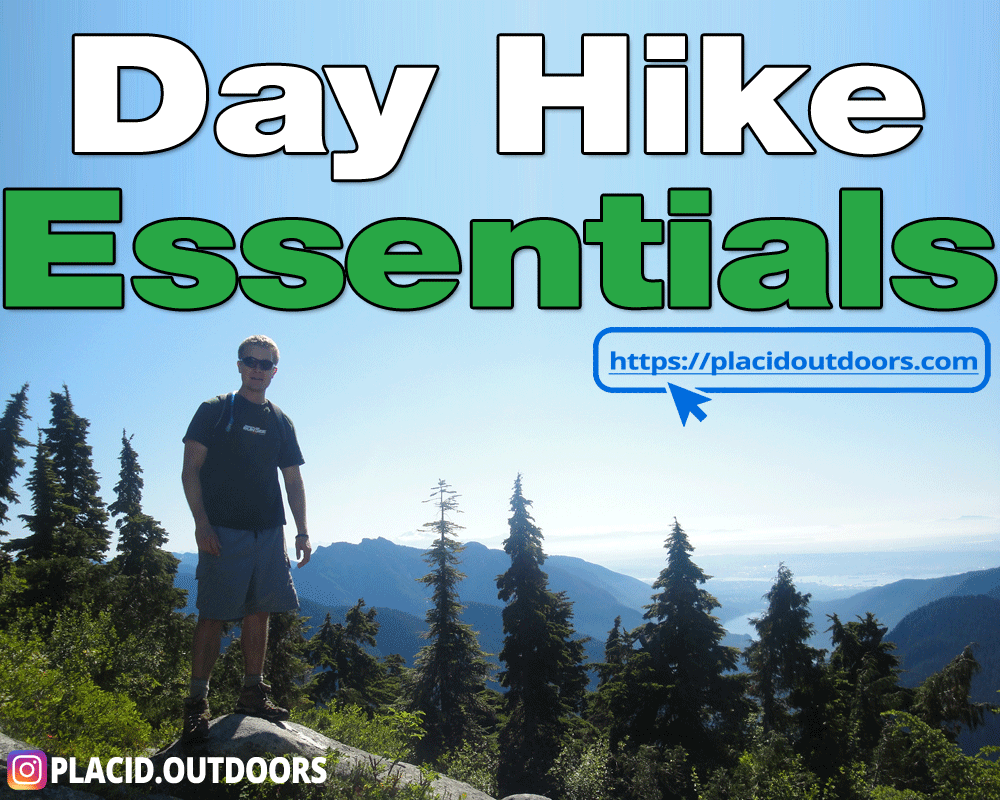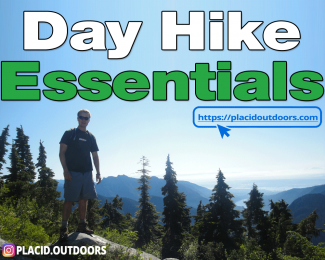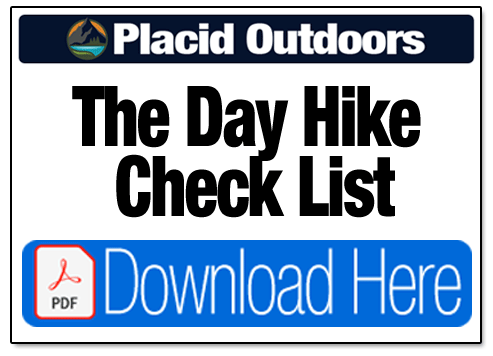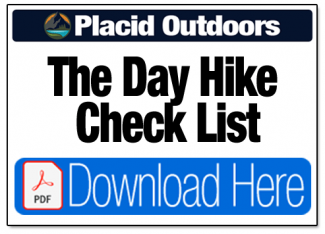Day Hiking Essentials


As most of us when we start hiking, we wing it. It's only after a few mistakes that we realize the importance of having a good pack even on small day hikes. It's my hope with this article to save you from those mistakes.
Preparation
First you need to understand the terrain you're hiking in as well as the weather. If it's a very hot day or the hike has heavy incline this changes what you need to pack. Just a reminder, the temperature in your home location means nothing if you’re hiking far away from that. Keep mind as well the higher you hike the colder the temperatures will be. The higher you are the more important sunscreen becomes.
Liquids
For a normal day hike in a non summer day water is perfectly fine. How much you need to bring of course greatly depends on temperatures, inclination but also your own personal requirements. It can be tough to decide since you don’t want to run out of water, but you also don't want to come back with liters of water. Although if you do consider the fact that you just lugged all this water which means you had a better workout.
A general good recommendation is to bring about half a liter of water per hour of moderate activity in moderate temperatures. 1 liter is 4.22 cups or 33.81 oz.
Should you bring electrolytes?
This is really up to personal preferences and this is not advice in any way, but I personally think electrolytes are way overrated. Especially on something as small as a day hike. If you run a 50k ultra or even a marathon in a hot summer day then yes use it, but for a chill day hike I would personally not bother.
Most of the time healthy people don’t need to worry about electrolytes as long as you stay hydrated. We haven’t found any fossilized Gatorade bottles yet so it's safe to assume we did quite well without them before so it's safe to assume we can do just fine without them today. Our bodies can adjust our electrolyte levels just fine on our own.
Foods
Good types of food to bring on hikes are:
- Various fruits.
- Protein bars.
- Beef Jerky.
- Sandwiches.
If you’re unsure how much food to bring I wrote an article on how much food to bring on a 1-2 day hike, it covers how to calculate your calorie requirements on a hike which could be useful.
Clothing
As I mentioned in the beginning of this article you need to check the forecast of where you’re hiking, not where you live. Use that to decide which clothing is ideal for your hike.
Footwear
Improper footwear can literally break a day hike. It’s not fun at all, if you’re out in the middle of no where and sprain an ankle. Not for you, nor your friends since they now have to help you limp back.
If you plan on hiking regularly I highly recommend you spend a little money on some good high quality hiking shoes. Go to a good store that has high quality gear, but also highly educated staff that can guide you. Often they will have fake inclines so that you can try and walk up and down.
Besides comfort and water resistance you also want to ensure that you’re protecting your angles. You also do not want your nails to dig into the front of your shoes when you’re walking down very steep inclines, unless of course you like to lose your nails, because that is what’ll happen. Nails takes about 6 months to grow back.
The only exception to that, is if you’re a trail runner, then you can certainly use your trail running shoes if they are proper trail running shoes and not just runners you use for trails. Hiking in normal runners can be done, but it is at a risk. It’s just up to you if you want to take that risk or not. I suspect the people that did, that then strained their ankle, no longer takes that risk.
Cold Weather
It’s critical to wear the right clothes during a cold weather hike, especially if you add rain to it. Wear multiple layers. I would recommend a base layer that is sweat proof. You don’t want that first layer getting drenched in sweat. Then you can wear another layer if it's really cold that keeps you warm and then finally an outer layer that keeps the wind and potential rain out. The mid layer can be skipped if it's not too cold, but I would recommend you always have the inner layer and the outer layer.
A good hat is great to keep you warm as well since you can lose a lot of heat through the top of your head and lastly some good gloves is key also.
Warm Weather
Choose light colors as they reflect the suns rays rather than absorb them like black colors would. Wear lose loose-fitted clothes. It's important not to wear clothing that are too tight if you need to climb up rocks.
A good hat or cap is a good idea to limit your sun burn.
Gear & Optional Equipment
Besides what we’ve covered above here’s a few gear ideas that you can consider bringing:
- Small First Aid Kit.
- Sun block.
- Wet wipes / Baby wipes. These things are amazing. We used to use these as “a shower” in the military when on exercise. You can use them to wash your hands before you eat or if you end up having to relieve yourself you’ll be glad you have them.
- Bear spray if there’s bears in the area you’re hiking.
- Zip lock bags. I always put my electronics in them in case it starts to rain.
- Compass.
- Headlamp.
- Multi tool or a knife.
- A map of the area. An actual physical map on paper.
- GPS.
- Water filtration unit. A sawyer squeeze is a great little thing and it doesn’t weigh a thing. This is really not needed, but if you already have one for your day hikes why not bring it. They do not weigh much after all and you will be glad you have it if you run into trouble.
- Mylar Thermal blankets.
Day Hike Check List
I’ve created a day hike check list that you can print and use:
Comments
0 Comments
Commenting not available yet
Popular Articles
The benefits of hiking for a healthier and happier lifeHow to bring water on a run
Day Hiking Essentials
How to Organize Your RV Trailer
Getting Started With Trail Running
How to clean a tent that smells
How much food should you pack for a 1-2 day backpacking trip?
How to Clean Your RV During COVID-19
How to choose a hiking tent
Ultralight Backpacking Tips

